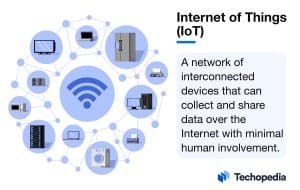Buzz Haven: Your Daily Dose of News
Stay informed and entertained with the latest buzz in news, trends, and insights.
IoT or Not IoT: The Tech Dilemma We Didn't See Coming
Explore the surprising tech dilemma of IoT! Discover how it’s reshaping our lives and what you need to know before diving in.
Is Your Device Truly IoT: Understanding the Difference
The term Internet of Things (IoT) has become increasingly popular, but not all connected devices qualify as true IoT devices. An IoT device is characterized by its ability to communicate data over the internet without the need for human intervention. This means that devices such as smart thermostats, wearable fitness trackers, and connected home security systems can collectively gather and share data, enhancing automation and convenience. To help clarify, consider the following key features of a true IoT device:
- Autonomy: Functions independently while collecting and analyzing data.
- Connectivity: Communicates with other devices and systems over the internet.
- Data Processing: Capable of processing information to make decisions without user input.
On the other hand, not all smart devices are classified as IoT. For example, traditional home appliances that simply connect to a smartphone via Bluetooth offer convenience but lack the essential features of true IoT devices. These appliances often require user interaction for functionality, making them less autonomous. When researching technology for your smart home or business, it's crucial to assess whether the device meets the criteria of a genuine IoT device.Understanding the differences can help you make informed decisions that contribute to an efficient and interconnected environment.

The Hidden Costs of IoT: What You Need to Know
The Internet of Things (IoT) promises a future filled with convenience and efficiency, but it also comes with hidden costs that many businesses often overlook. These costs can encompass a wide range of factors including hardware expenses, maintenance, and the need for continuous updates. For instance, implementing IoT solutions requires investments in smart devices, network infrastructure, and often bespoke software solutions. Additionally, operational costs can skyrocket due to increased energy consumption and ongoing technical support. Businesses must carefully analyze these expenditures and include them in their overall budgeting to avoid unexpected financial burdens.
Moreover, the security risks associated with IoT devices represent another hidden cost. As more devices connect to the internet, the potential for cyberattacks increases, leading to potential data breaches and the costs associated with recovering from them. According to industry experts, a single data breach can cost a company millions in damages, not to mention the loss of customer trust. Therefore, companies should factor in robust cybersecurity measures to safeguard their IoT networks. By understanding these hidden costs, businesses can make informed decisions that not only leverage the benefits of IoT but also protect their financial and reputational investments.
Navigating Security Risks: Is It Really IoT or Just Hype?
The Internet of Things (IoT) has become a buzzword in the tech industry, often accompanied by promises of greater convenience and efficiency. However, as we embrace this connected world, we must also navigate security risks that accompany these advancements. The reality is that while IoT technology offers incredible benefits, it can also introduce vulnerabilities that hackers are eager to exploit. Devices ranging from smart home appliances to industrial sensors can become entry points for cyberattacks if not adequately secured.
It's essential to distinguish between the genuine potential of IoT and the hype surrounding it. For instance, experts suggest implementing robust security measures such as regular software updates, strong passwords, and network segmentation to mitigate risks. Without these precautions, the promise of a connected life can quickly transform into a nightmare of compromised data and privacy breaches. As consumers and organizations, we must remain vigilant and informed, ensuring that the security risks associated with IoT are taken seriously to enjoy its benefits fully.